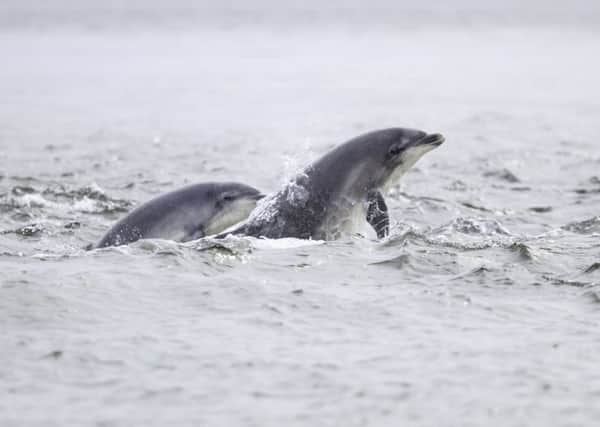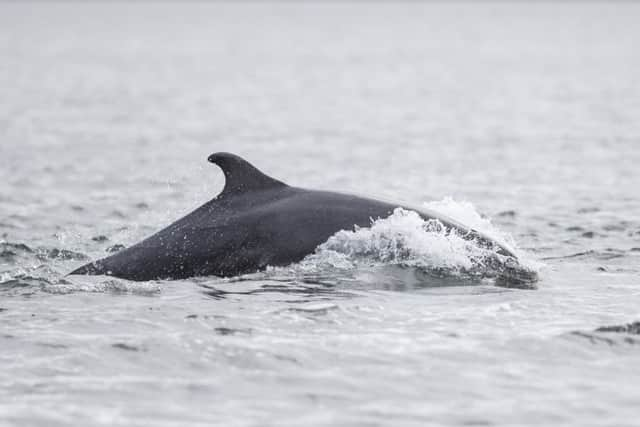Pod of dolphins spotted off Portobello


And experts reckon the continued presence of the marine mammals can only be good news for the area, not just for spotters or photographers keen on grabbing a photo or a video.
But also because the dolphins being there means they’re after fish, and the fish will only be there if the water is good.
Advertisement
Hide AdAdvertisement
Hide AdNumbering about 190 to 200 and forming a resident east coast population, these majestic creatures hunt the waters for food all year round from Caithness to the north of England.


“They catalogue individuals by nicks and scars on their dorsal fins – each one is unique,” said Katie Dyke, of Whale and Dolphin Conservation.
“You can recognise each individual and tell who they are by that mix of scars and you’ll have the same individuals hanging around the Moray Firth for a number of years.
“Then they might move to the Tay or to Aberdeen but it’ll be the same dolphins seen year after year. They hang around in the same pods and family groups though individuals might change.”
Advertisement
Hide AdAdvertisement
Hide AdMs Dyke put increased sightings down to a more aware and better equipped public than an increase in dolphin numbers or a change in behaviour. “We’re increasingly seeing more people out looking. More people with binoculars and more people in the know, knowing it’s dolphins,” she said.
Ms Dyke put dolphin movements down to following their food source, including salmon and trout.
“They’re along the east coast all around the year but we tend to see them less in winter months because they’re not so coastal so we don’t see them from the shore.
“They’re not feeding running fish – trout runs or salmon runs. Because they’re here all year round, they’re going further offshore to feed on a different food source.”
Advertisement
Hide AdAdvertisement
Hide AdMs Dyke said winter spotting is also more difficult because research suggests dolphins feed at night in the winter, while darker nights make sightings less likely.
Dolphin numbers can be negatively affected by development, noise and pollution – making conservation efforts increasingly important.
“We need to be very careful to make sure we protect their habitat so their population continues to grow,” said Ms Dyke.
Particularly crucial are efforts to ensure the dolphins’ relatively fragile breeding remains unaffected.
Advertisement
Hide AdAdvertisement
Hide Ad“They have young all year round but the female only has one young a year so they have a slow reproductive process and only reach sexual maturity at 13 or 14,” said Ms Dyke.
“So although there’s a stable population right now, if there’s a big impact on it, they won’t be able to bounce back easily.”
Those keen to try and spot a dolphin in the Forth are advised to do so from the shore.
Whale and Dolphin Conservation is training volunteers and local members in Kinghorn to look out for whales and dolphins.
Advertisement
Hide AdAdvertisement
Hide Ad“It’s not just bottlenose dolphins, there were humpback whales spotted last year – we’re particularly lucky in Scottish coastal areas,” said Ms Dyke.
And anyone heading to the coast with a pair of binoculars is advised to choose their days carefully.
“Go out when it’s quite calm and the water is not too choppy,” said Ms Dyke. “So you can see things break the surface of the water.”